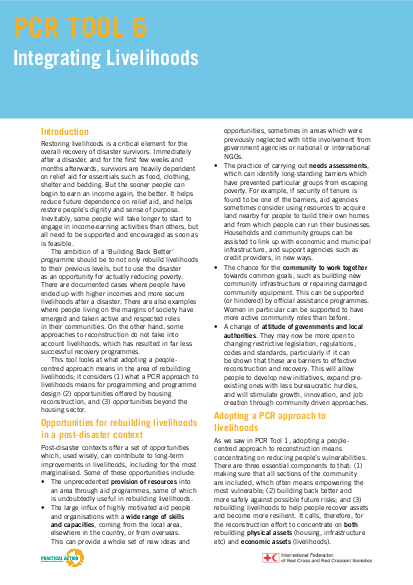
Restoring livelihoods is a critical element for the overall recovery of disaster survivors. Immediately after a disaster, and for the first few weeks and months afterwards, survivors are heavily dependent on relief aid for essentials such as food, clothing, shelter and bedding. But the sooner people can begin to earn an income again, the better. It helps reduce future dependence on relief aid, and helps restore people’s dignity and sense of purpose. Inevitably, some people will take longer to start to engage in income-earning activities than others, but all need to be supported and encouraged as soon as is feasible. The ambition of a ‘Building Back Better’ programme should be to not only rebuild livelihoods to their previous levels, but to use the disaster as an opportunity for actually reducing poverty. There are documented cases where people have ended up with higher incomes and more secure livelihoods after a disaster. There are also examples where people living on the margins of society have emerged and taken active and respected roles in their communities. On the other hand, some approaches to reconstruction do not take into account livelihoods, which has resulted in far less successful recovery programmes.
Resource collections
- Accountability to affected populations (AAP)
- ALNAP focus topics
- Evaluating humanitarian action
- UN Habitat - Urban Response Collection
- Urban Response - Urban Crisis Preparedness and Risk Reduction
- Urban Response Collection - Community Engagement and Social Cohesion
- Urban Response Collection - Economic Recovery
- Urban Response Collection - Environment and Climate Change
- Urban Response Collection - Housing, Land and Property
- Urban Response Collection - Urban Crisis Response, Recovery and Reconstruction
- Urban Response Collection - Urban Resilience